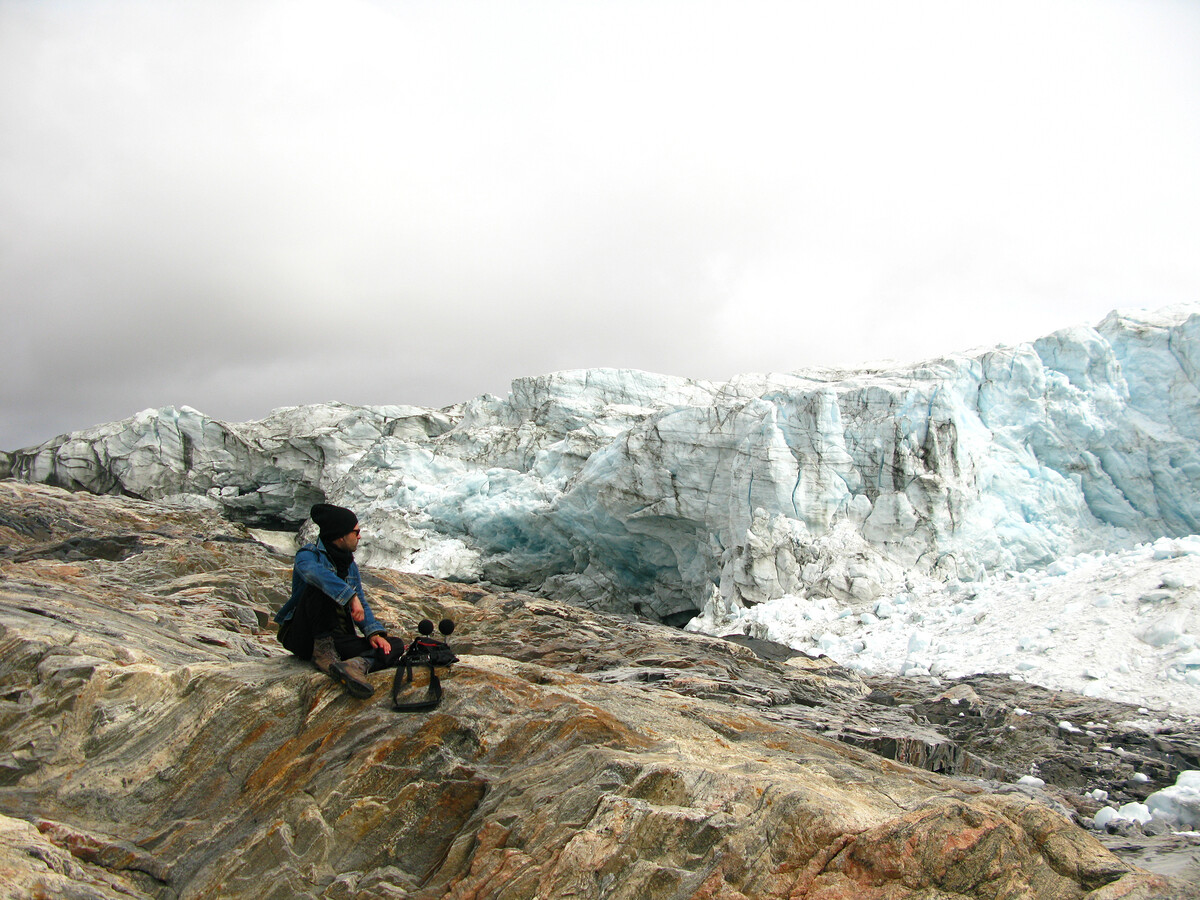Series of exhibitions and public artworks regarding ice melt and climate change
March 31–May 27, 2018
Providence, RI
USA
Hours: Monday–Sunday 11am–4pm,
Thursday 1–9pm,
Saturday–Sunday 1–4pm
T +1 401 863 2932
bell_gallery@brown.edu
Opening: April 6, 5:30pm, lecture by Jacob Kirkegaard
Performance: April 7, 8pm, Labyrinthitus by Jacob Kirkegaard
Conversation: April 20, 5:30pm, with Olaf Otto Becker & Camille Seaman
The current crisis of climate change and the threat of ice melt and sea level rise have drawn legions of international artists to Greenland, the Arctic and Antarctic. They travel to document the beauty and the destruction of the region to raise awareness of the impending loss and elicit action toward change.
33° presents the work of six artists: Sound artist Jacob Kirkegaard and photographers Olaf Otto Becker, Camille Seaman, James Balog, Jean de Pomereu, and Iain Brownlie Roy. Kirkegaard’s 40-minute soundscape Isfald (Icefall) will be on view at the David Winton Bell Gallery, alongside photographs of glaciers and the Greenland icesheet by Becker and Seaman. Photomurals by Becker, Seaman, Balog, de Pomereu, and Roy will be displayed on the exterior of buildings across Brown’s campus.
An opening reception with lecture by Jacob Kirkegaard will be held on Friday, April 6, at 5:30pm. Other programming includes a concert of Kirkegaard’s Labyrinthitus, Saturday, April 7, at 8pm, and Artists in Conversation: Olaf Otto Becker and Camille Seaman, on April 20, at 5:30.
Support for 33° is provided by an anonymous donor and the Brown Arts Initiative.
Jacob Kirkegaard
Danish artist and composer Jacob Kirkegaard presents listening as a means of experiencing the world. Often revealing unheard and unseen phenomena, Kirkegaard has recorded environments as different as subterranean geyser vibrations, empty rooms in Chernobyl, and otoacoustic emissions (low level sounds emitted by the cochlea of the human ear).
His 40-minute soundscape Isfald was recorded in Greenland in June 2013. Using hydrophones and contact microphones, Kirkegaard captured the deep booms of calving glaciers from twenty meters below the surface of the Illulisat ice fjord and the high pitch sounds of melting, cracking ice at the surface. In the resulting immersive environment, speakers are mounted below the floor offering the impression of walking on cracking ice as the sound of calving glaciers vibrate through the space.
Isfald was commissioned and lent by the Louisiana Museum of Modern Art, Humlebæk; Acquired with funding from The Augustinus Foundation.
Olaf Otto Becker
Drawn to Greenland for the quality of light, landscape photographer Olaf Otto Becker sought wild, unspoiled landscapes and found “the visible traces of human overpopulation left behind in nature.” Becker has photographed in Greenland since 2006, until quite recently using a cumbersome 8 x 10 camera as he traveled along 2400 miles of the west coast in a small dinghy and trekked overland on Greenland’s inland ice for more than 275 miles on foot. On the latter trip and in a series titled “Above Zero,” Becker photographed rivers of meltwater that are increasingly appearing due to global warming. Visible throughout are black, crusty deposits—from dust and rust in the air—that together with climate change are accelerating the melting of the ice sheets.
Becker titles his images with GPS coordinates, to aid in documenting changes in the landscape over time. Included are selections from his three bodies of works on Greenland: Broken Line, Above Zero, and the newly released Sculpture of Change.
Camille Seaman
For more than a decade Camille Seaman has documented the rapidly changing landscapes of Earth’s polar regions through the lens of portraiture rather than landscape. As an expedition photographer aboard small ships in the Arctic, Antarctic, and Greenland, she has chronicled the accelerating effects of global warming on the jagged face of nearly fifty thousand unique icebergs. Seaman’s perspective of the landscape is entwined with her Shinnecock tribal identity, which taught her from an early age to recognize all living beings—trees, spiders, fish, and even ice—as individual members of one, enormous family. Viewing human beings as fundamentally interconnected to nature, Seaman approaches photographing icebergs “as if I am making portraits of my ancestors,” each one with a distinct history, personality, and set of social relationships. Her dynamic images embed her subjects in an enduring, nourishing, but increasingly strained relationship with their environment—of which humans are an integral part.

